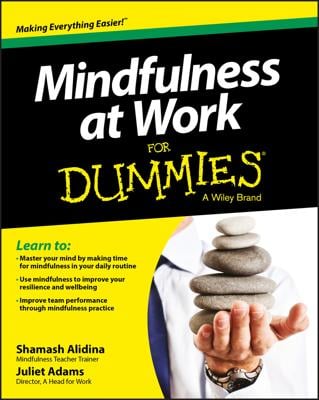Getting frustrated can be a mind pattern and watching and noticing the frustration, rather than reacting to it, may gradually change the pattern. Being distracted during meditation is a very common experience, a part of the learning process. Expect some frustration and then see how to cope with it rather than trying to run away from it.
Reduce external distractions to a minimum. Here are a few precautions to take:
-
Switch off or unplug all your phones.
-
Turn off all televisions, computers and pretty much anything electronic.
-
Ask anyone else in your home to give you some quiet time if possible.
You can manage internal distractions in the following ways:
-
If you need to deal with something particularly urgent or important, do it before you start meditating. Your mind can then be at rest during the meditation.
-
Watch the stream of thoughts that arise in your mind like clouds that pass across the sky. See the thoughts as separate from you and note what effect that separation has.
-
Welcome your thoughts for a while. Notice how you feel.
-
Be patient. Remember that it’s natural for the mind to think. Label each thought with a word such as "thinking" or "planning" and then gently invite the attention back to your breathing.
How to handle unusual experiences during meditation
Meditation isn’t about getting a certain experience but about experiencing whatever is happening right now. Blissful experiences come and go. Painful experiences come and go. You just need to keep watching without holding on to either. The practice itself does the rest. Meditation is far, far simpler than people think.In meditation you may sometimes experience floating, flashing lights, flying pigs or pretty much anything the mind can imagine. Whatever unusual feelings arise, remember that these are just experiences and come back to the focus of the meditation. In mindfulness you don’t need to analyze these experiences – simply let them go, as far as you can, and then come back to the senses.
Learn to relax for mindfulness
The word relax originally comes from the Latin word to loosen or open again. Relax is such a common word. "Just relax," people say. If only it were so simple. How do you relax during meditation? Essentially by learning to accept the tension you’re currently experiencing, rather than fighting with it.Consider this scenario: You feel tense. Your shoulders are hunched up and you can’t let go. What do you do? Try the following steps if tension arises during your meditation:
-
Become aware of the tension. Get a sense of its location in your body.
-
Notice whether the tension has an associated color, shape, size or texture. Allow yourself to be curious about it rather than trying to get rid of the tension.
-
Feel right into the center of the tension and breathe into it. Feel the tense part of the body as you simultaneously feel your natural breathing. Just be with the tension as it is.
-
Notice if you have any feeling or desire to get rid of the tension. As best you can, let go of that too and see if you can accept the sense of tension a little bit more than you already do.
Fighting to let go of tension just leads to more stress and tension. That’s because trying implies effort and if the tension doesn’t disappear, you can end up more frustrated and angry. A warm, gentle acceptance of the feeling is far more effective.
Meditation can lead to very deep relaxation. However, relaxation is not the aim of meditation – meditation is ultimately an aimless activity.Develop patience with mindfulness
Meditation is patience training. To commit to connect with the breath or the senses requires patience. If you feel impatient in your meditation practice but continue to sit there, you’re beginning to train the patience muscle.You may be impatient for results if you’re a beginner to mindfulness. You’ve heard of all the benefits of meditation and so you want some. That’s fair enough. However, because meditation requires patience, when you begin to practice regularly, you’ll see that the more impatient you are, the fewer "results" you get.
Decide how long you’re going to practice mindfulness meditation and stick to it. Take the meditation moment by moment and see what unfolds. You spend all your life trying to get somewhere and achieve something. Meditation is a special time for you to let go of all that and just be in the moment. As well as requiring patience, meditation develops it.
If you can’t cope with being still and feeling your breath for ten minutes, try five minutes. If that’s too much, try two minutes. If that’s too much, try ten seconds. Begin with however long you can manage, and build it up, step by step. The most important thing is to keep at it, practice as regularly as you can, and gradually increase the time you can practice for.
